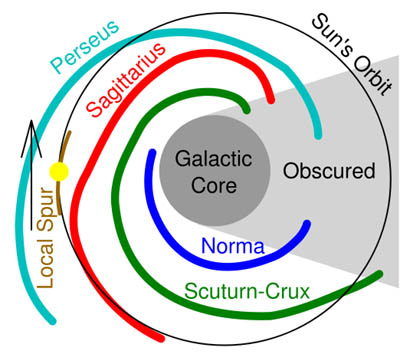I hate living in the boonies. No, I’m not referring to Northeastern North Carolina, I’m referring to our location on a scope that surpasses geography and ventures into cosmology.
Our sun is one of about 200 billion stars swirling around in a galaxy that’s a 100,000 light years across. If only 10 percent of those stars have planets, and 10 percent of those planets can support life, and 10 percent of those life-supporting planets develop life, and 10 percent of that life evolves intelligence, and 10 percent of that intelligent life produces technology that releases detectable signs of their existence into space, then that’s still 20 million intelligent civilizations waving great big “We Are Not Alone” signs in just our Milky Way galaxy alone.
This collection of “ifs” is known as the Drake Equation, and no matter how you tweak the variables, it still comes out to a really big number of aliens in our cosmic neighborhood. When I’m not using my home computer, it goes to work analyzing radio signals from space for the Search for Extra-Terrestrial Intelligence (SETI) project, which has yet to produce conclusive evidence of space aliens in 47 years.
Why is that? I think it’s because our solar system is located on the outer edge of a tiny stream of stars called the Orion spur, stranded between the rivers of stars in Perseus and Sagittarius spiral arms. If Perseus and Sagittarius are Tidewater and Raleigh, then the Orion Spur is Elizabeth City, and our Sun is a farmhouse out in Weeksville.
 You are on the edge of the Yellow Dot Image Courtesy of Wikipedia |
Human beings are the slack-jawed yokels of the Milky Way galaxy. Rednecks, hillbillies, bumpkins, wahoos… choose your pejorative. I’m allowed to use all of them, I’m half West Virginian.
The point is that, from a cosmological standpoint, all the really exciting stuff, the bright lights and big to-do’s, are happening hundreds of light-years away, places so distant we can only fantasize about the technologies it would take to travel out there.
Or for them to travel out our way, and for what purpose would they want to visit us? Just imagine a gray–one of those classic bug-eyed aliens from The X-Files and Close Encounters of the Third Kind–saying to another gray, “I thought I might go check out that pale blue dot out there in the darkness, orbiting that tiny yellow star. You know, the one the inhabitants call Soil, or Dirt, or Mud, Or something like that.”
Their friend’s antenna would quirk curiously, as if this were one New Yorker announcing to another their intention to visit Currituck, “Why would you want to do that?”
It seems obvious to me. Civilizations living in the Milky Way’s fast-lanes have much brighter night skies that are also much more uniform and boring. The skies way out here in this sparsely-starred zone of space are much darker, like the skies out in the country, when you get far away to where the city’s light pollution can’t block out the awesome view of our Galaxy’s river of stars spilling across our night sky.
We sometimes forget there’s a whole beautiful Universe to look at over our heads, pulling us out of ourselves with a down-to-earth perspective of our place in it. Colder weather brings clearer skies, take a moment to appreciate it.
Cross-posted at GO.
Comments
5 responses to “We Live in the Cosmic Boondocks”